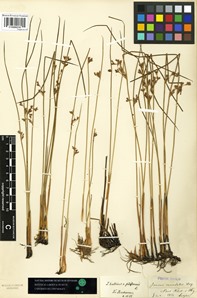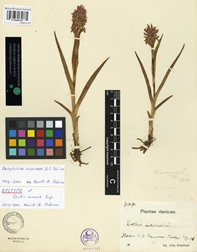Danish herbarium
 Curator
Curator
Collection managers
About the collection
The Danish herbarium contains more than a quarter of a million collections of flowering plants, gymnosperms and vascular cryptogams from Denmark. Approximately 95% of Denmark’s c. 1,925 indigenous and athropochorous species are represented, making the herbarium the largest existing collection of Danish vascular plants. All material has been identified to family, nearly all to genus and the vast majority to species.
The most important collectors are: S. Andersen, J.S. Baagøe, M.P. Christiansen, K. Friderichsen, O. Gelert, A Hansen, P. Hartvig, K. Jessen, C.A. Jørgensen, H.P.G. Koch, L. Kring, Joh. Lange, M.T. Lange, P. Lütken, H. Mortensen, H. Nielsen, H. Øllgaard, A. Pedersen, S.M. Rasmussen, C. Raunkiær, E. Rostrup, F. Skovgaard, E. Wessberg, K. Wiinstedt. All collections from the Topographic-Botanical Investigation of Denmark (TBU, 1904-1989) are kept in the herbarium, and collections from the recent Atlas Flora Danica project (AFD, 1992-2015) are currently being added.
Several Danish flora handbooks have been prepared primarily using information from the collections in the Danish herbarium, and in later years the herbarium has constituted an important resource for the international Atlas Florae Europaeae and Flora Nordica projects. Besides, the long time series of collections offer excellent opportunities for studying phenological changes induced by global warming, the decline of red-listed species and the introduction/expansion of invasive species.
The circa 30.000 collections of Danish grasses (Poaceae) have been digitised and transcribed and will be made publicly available in 2019 due to a private donation. The transcribed data will be used in a larger research project on allergenic pollen exposure in Denmark. Contact Natalie Iwanycki Ahlstrand natalie.iwanycki@snm.ku.dk for more information.
 Danish herbarium in numbers
Danish herbarium in numbers
- Estimated number of specimens/collections: The herbarium comprises c. 268,000 dried specimens.
- Types: 529.
- Digitally available specimens: All type specimens are registered digitally with label data and images. Label data of 4867 specimens of red-listed taxa have been registered digitally, and for 2246 of them, the data are accessible online through the Electronic TBU File (TBUe).
- Percentage digitized: c. 2%
Strengths
Particular strengths include:
- Hieracium (Asteraceae), in particular the collections of O. Gelert, E. Keld and K. Wiinstedt.
- Potamogeton (Potamogetonaceae), in particular the collections of J.S. Baagøe; some specimens are mounted on sheets of standard size and filed in the main herbarium, others are mounted on sheets of folio size and kept separately.
- Rubus (Rosaceae), in particular the collections of M.P. Christiansen, K. Friderichsen, O. Gelert and A. Pedersen.
- Taraxacum (Asteraceae), in particular the collections of M.P. Christiansen, C. Raunkiær, and H. Øllgaard.
- The Topographic-Botanical Investigation of Denmark (TBU, 1904-1989) and the recent Atlas Flora Danica survey project (AFD, 1992-2015).
Important subcollections
History
The Danish Botanical Society was founded in 1840, and its first members quickly compiled a comprehensive herbarium of Danish plants that was donated to the Botanical Garden in 1843. There, it was supplemented with previously acquired Danish herbarium specimens, and it still constitutes the nucleus of the Danish herbarium. Today, the Danish herbarium mainly comprises collections from the 19th century onwards, with a few dating back to the 1700s, and with the pharmacist C. Heerfordt’s bound herbarium from c. 1650 being the oldest element. Throughout its history, the Danish herbarium has benefited substantially from close collaboration between its shifting curators and the large contingent of Danish amateur botanists including the Danish Botanical Society, Dansk Botanisk Forening.
Digitisation of Danish grasses
Our entire collection of nearly 30.000 Danish grasses has been digitised by dutch heritage company Picturae and will be publicly available through www.GBIF.org soon thanks to a private donation.

